Abstract
Knowledge of the biochemistry of Plasmodium is emerging as a new field. Previous studies showed that the parasite apparently requires electron transfer for energy, and techniques to study such energy mechanisms are available. The discovery of the existence of coenzyme Q8 in Plasmodium implies an indispensable functionality for this redox entity in the electron transfer of the parasite, as coenzyme Qn similarily functions in other forms of life.
Effective antimalarial activity in prophylaxis has been demonstrated in sporozoite-induced infections by Plasmodium gallinaceum in chicks by several representatives of 7-alkylmercapto-6-hydroxy-5,8-quinolinequinones. The absence of toxicity in this assay even at greatly elevated dosage underscores the achievement of selectivity and safety to the host for the potential utilization of antimetabolites of coenzyme Qn as medicinals.
Seven new 7-alkylmercapto-6-hydroxy-5,8-quinoline-quinones were synthesized. The structural variations of the 7-alkylmercapto group in relationship to the antimalarial activities reveal substantial differences in biological activities, which can reflect molecular specificities of enzyme sites and which are not evident from the deceptively minor structural differences in the alkylmercapto groups.
These analogs of coenzyme Q8 having effective antimalarial activity are known to inhibit mammalian coenzyme Qn enzymes, and could be useful in elucidation of the basic electron transfer mechanisms of Plasmodium.
Keywords: coenzyme Q, malaria, antimetabolites, therapy, bioenergetics
Full text
PDF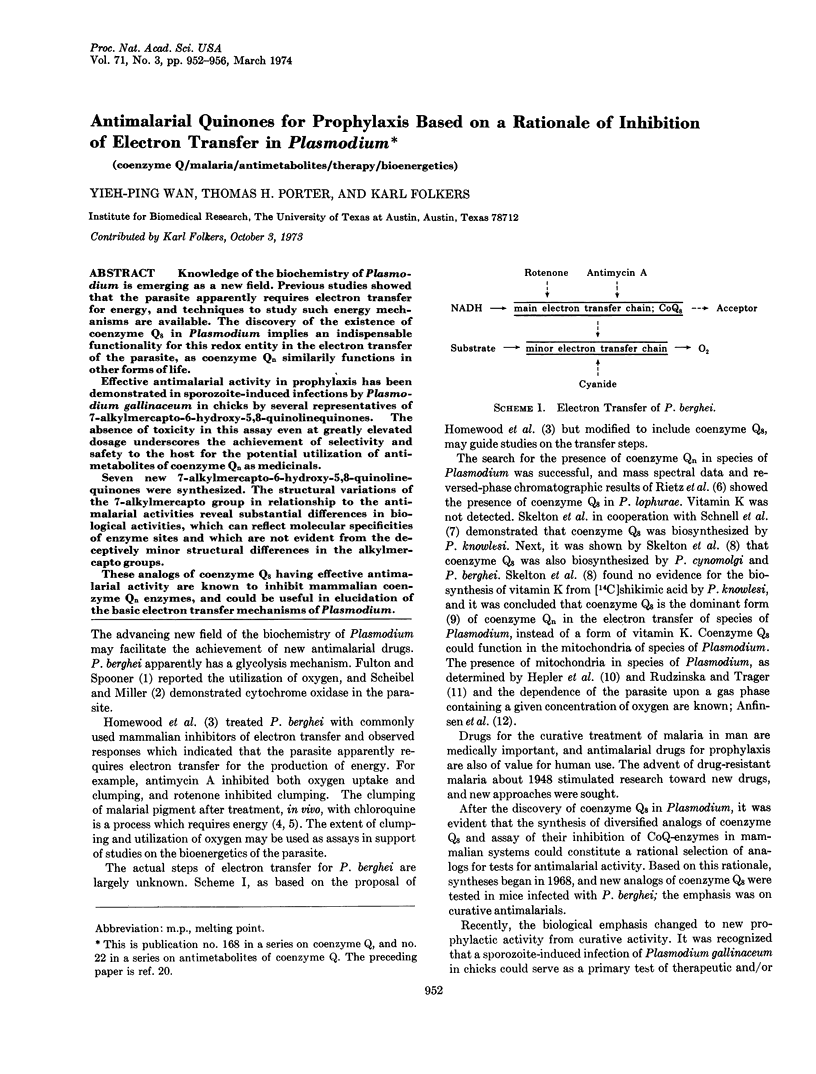
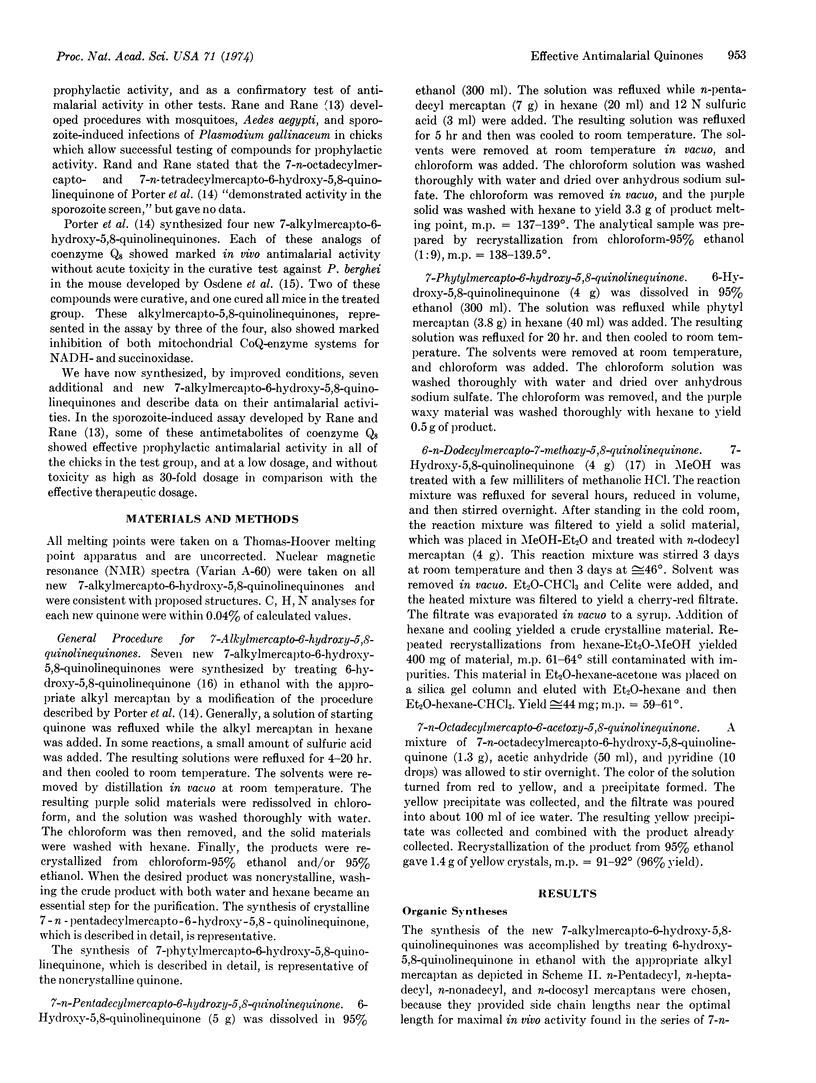
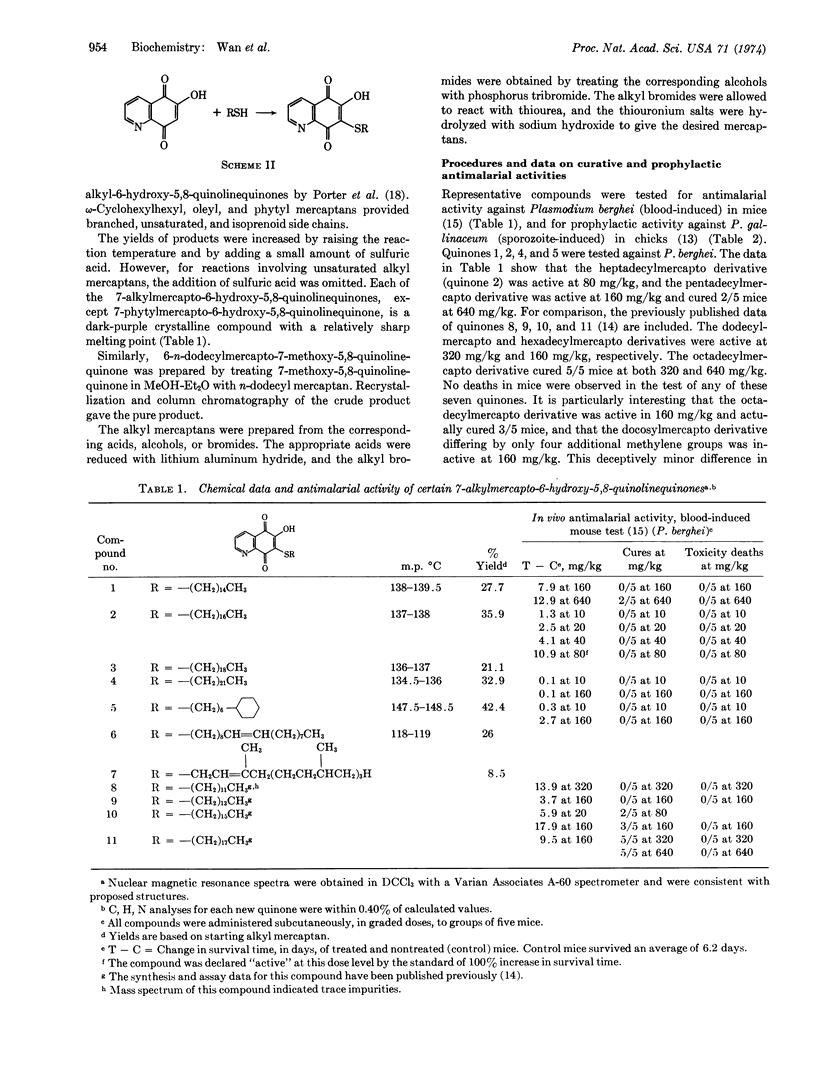
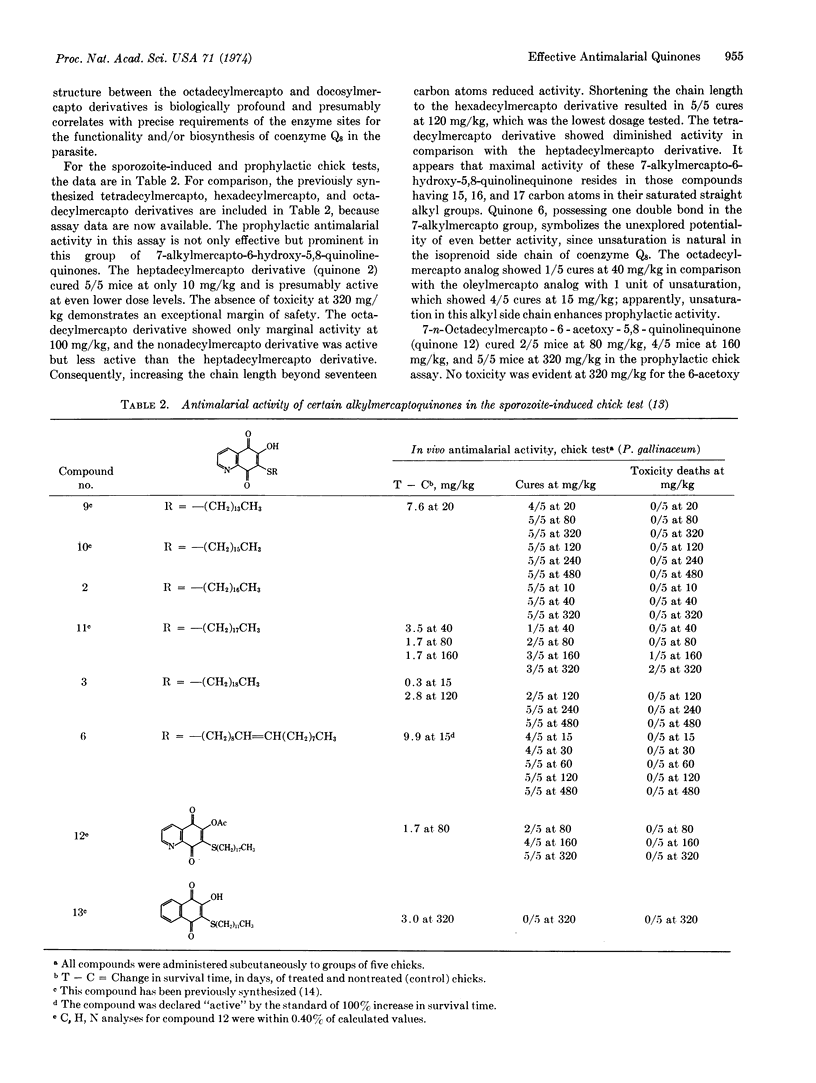
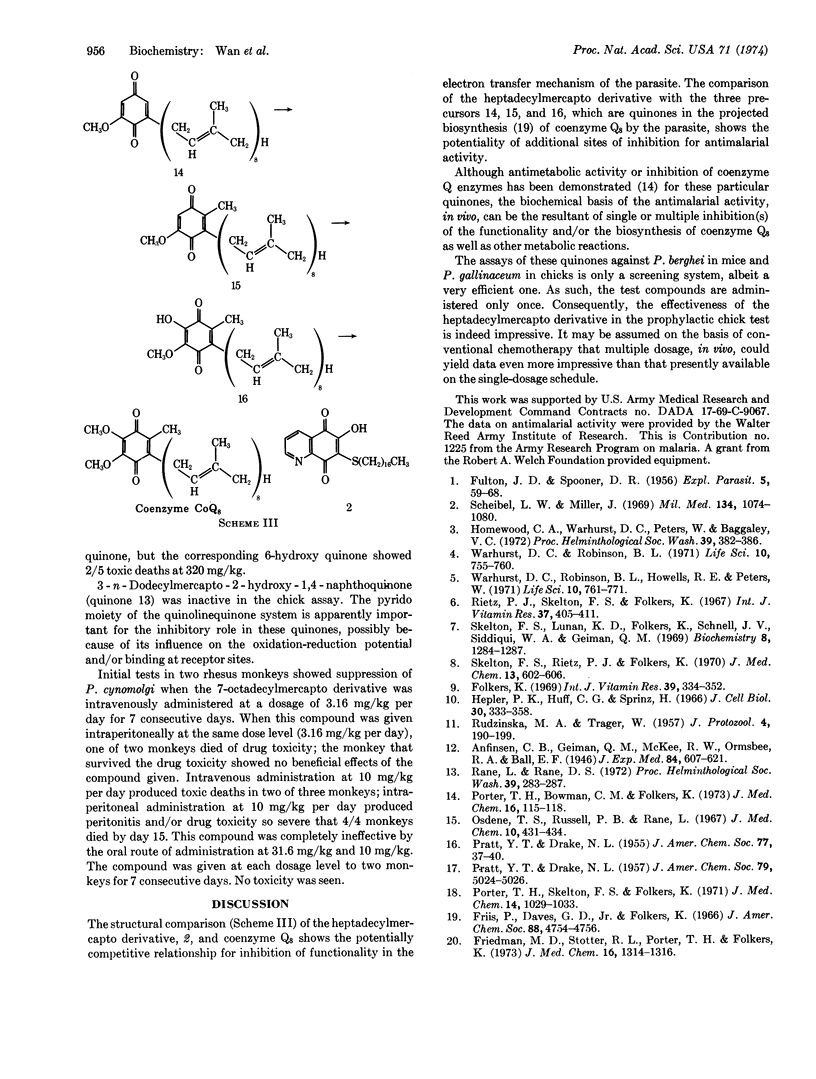
Selected References
These references are in PubMed. This may not be the complete list of references from this article.
- FULTON J. D., SPOONER D. F. The in vitro respiratory metabolism of erythrocytic forms of Plasmodium berghei. Exp Parasitol. 1956 Jan;5(1):59–78. doi: 10.1016/0014-4894(56)90006-6. [DOI] [PubMed] [Google Scholar]
- Folkers K. Survey on the vitamin aspects of coenzyme Q. Int Z Vitaminforsch. 1969;39(3):334–352. [PubMed] [Google Scholar]
- Friedman M. D., Stotter P. L., Porter T. H., Folkers K. Synthesis of alkyl-4,7-dioxobenzothiazoles with prophylactic antimalarial activity. J Med Chem. 1973 Nov;16(11):1314–1316. doi: 10.1021/jm00269a026. [DOI] [PubMed] [Google Scholar]
- Hepler P. K., Huff C. G., Sprinz H. The fine structure of the exoerythrocytic stages of Plasmodium fallax. J Cell Biol. 1966 Aug;30(2):333–358. doi: 10.1083/jcb.30.2.333. [DOI] [PMC free article] [PubMed] [Google Scholar]
- Porter T. H., Bowman C. M., Folkers K. Antimetabolites of coenzyme Q. 16. New alkylmercaptoquinones having antimalarial curative activity. J Med Chem. 1973 Feb;16(2):115–118. doi: 10.1021/jm00260a007. [DOI] [PubMed] [Google Scholar]
- Porter T. H., Skelton F. S., Folkers K. Synthesis of new 5,8-quinolinequinones as inhibitors of coenzymes Q and as antimalarials. J Med Chem. 1971 Nov;14(11):1029–1033. doi: 10.1021/jm00293a003. [DOI] [PubMed] [Google Scholar]
- Rietz P. J., Skelton F. S., Folkers K. Occurrence of ubiquinones-8 and -9 in Plasmodium lophurae. Int Z Vitaminforsch. 1967;37(4):405–411. [PubMed] [Google Scholar]
- Scheibel L. W., Miller J. Glycolytic and cytochrome oxidase activity in Plasmodia. Mil Med. 1969 Sep;134(10):1074–1080. [PubMed] [Google Scholar]
- Skelton F. S., Lunan K. D., Folkers K., Schnell J. V., Siddiqui W. A., Geiman Q. M. Biosynthesis of ubiquinones by malarial parasites. I. Isolation of [14C]ubiquinones from cultures of rhesus monkey blood infected with Plasmodium knowlesi. Biochemistry. 1969 Mar;8(3):1284–1287. doi: 10.1021/bi00831a064. [DOI] [PubMed] [Google Scholar]
- Skelton F. S., Rietz P. J., Folkers K. Coenzyme Q. CXXII. Identification of ubiquinone-8 biosynthesized by Plasmodium knowlesi, P. cynomolgi, and P. berghei. J Med Chem. 1970 Jul;13(4):602–606. doi: 10.1021/jm00298a004. [DOI] [PubMed] [Google Scholar]
- Warhurst D. C., Robinson B. L. Cytotoxic agents and haemozoin pigment in malaria parasites (Plasmodium berghei). Life Sci II. 1971 Jul 8;10(13):755–760. doi: 10.1016/0024-3205(71)90207-4. [DOI] [PubMed] [Google Scholar]
- Warhurst D. C., Robinson B. L., Howells R. E., Peters W. The effect of cytotoxic agents on autophagic vacuole formation in chloroquine-treated malaria parasites (Plasmodium berghei). Life Sci II. 1971 Jul 8;10(13):761–771. doi: 10.1016/0024-3205(71)90208-6. [DOI] [PubMed] [Google Scholar]


